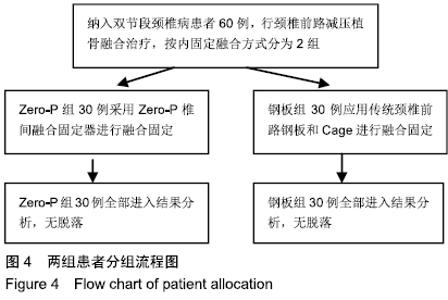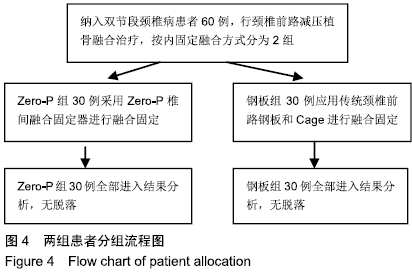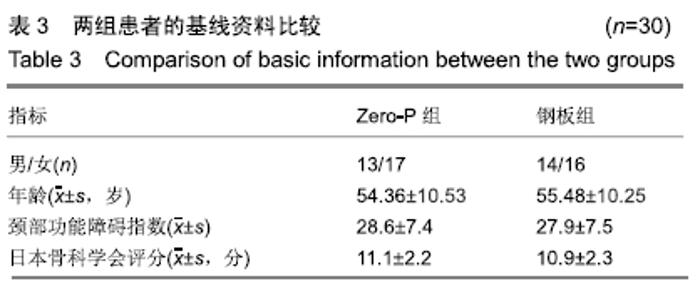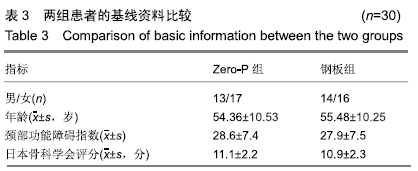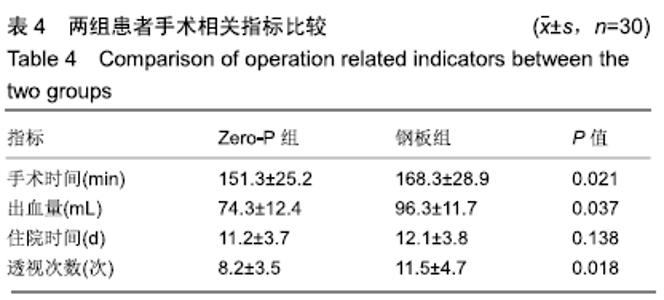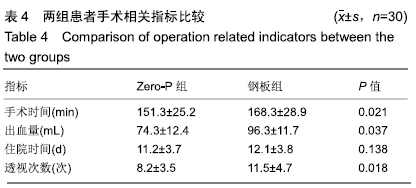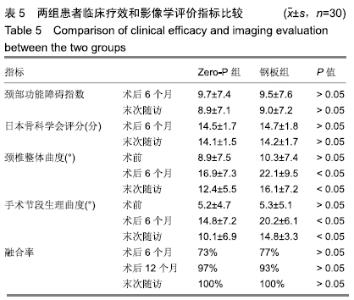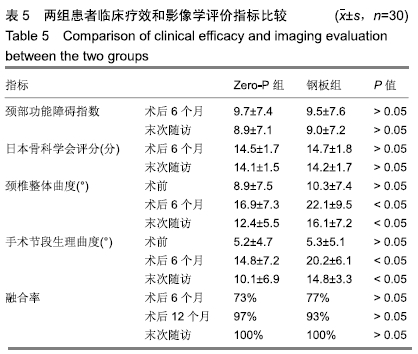[1] SIMMONS EH, BHALLA SK. Anterior cervical discectomy and fusion. A clinical and biomechanical study with eight-year follow-up. J Bone Joint Surg Br. 1969;51(2):225-237.
[2] KAISER MG, HAID RW, SUBACH BR, et al. Anterior cervical plating enhances arthrodesis after discectomy and fusion with cortical allograft. Neurosurgery. 2002;50(2):229-236; discussion 236-238.
[3] WANG JC, MCDONOUGH PW, ENDOW KK, et al. Increased fusion rates with cervical plating for two-level anterior cervical discectomy and fusion. Spine (Phila Pa 1976). 2000;25(1): 41-45.
[4] 袁文,贾连顺,陈德玉,等. AO颈椎前路带锁钢板内植物并发症[J].中国脊柱脊髓杂志,2001,11(2):103-104.
[5] 童杰.三种颈椎前路钢板系统临床应用比较和并发症分析[D].长沙:中南大学,2005.
[6] 黄吉军,杨建东,陶玉平,等. 显微减压联合颈椎 Zero-P 植入治疗颈椎病的临床疗效[J].实用骨科杂志,2015,21(8):673-675.
[7] 吴增志,赖茂松,熊浩,等.颈前路零切迹椎间融合固定系统椎间融合术对邻近椎间盘生物力学影响的有限元分析[J].广西医学, 2017,39(6):809-811.
[8] SCHOLZ M, SCHLEICHER P, PABST S, et al. A zero-profile anchored spacer in multilevel cervical anterior interbody fusion: biomechanical comparison to established fixation techniques. Spine (Phila Pa 1976). 2015;40(7): E375-E380.
[9] 张在恒,厉玉杰,王永峰,等.颈椎前路钢板与零切迹系统治疗多节段伴后凸畸形颈椎病[J].实用骨科杂志,2017,23(7):600-603.
[10] 方冠军,刘先银,黎松波,等.前路Zero-P椎间融合系统与传统钛板cage融合器治疗双,多节段颈椎病的疗效比较[J].广东医科大学学报,2017,35(1):50-53.
[11] BAZAZ R, LEE MJ, YOO JU. Incidence of dysphagia after anterior cervical spine surgery: a prospective study. Spine (Phila Pa 1976).2002;27(22):2453-2458.
[12] 叶国栋,王艳国.颈椎曲度异常与颈椎病的相关性[J].颈腰痛杂志,2014,35(2):154-156.
[13] PITZEN TR, CHROBOK J, STULIK J, et al. Implant complications, fusion, loss of lordosis, and outcome after anterior cervical plating with dynamic or rigid plates Two-Year results of a Multi-Centric, randomized, controlled study. Spine (Phila Pa 1976). 2009;34(7): 641-646.
[14] 陈文恒,郭团茂,刘强,等.颈前路零切迹椎间融合系统与钛板系统治疗单节段颈椎病的疗效比较[J].中国临床研究,2017,30(10): 1319-1323.
[15] 杨迪,邵海宇,张骏,等.零切迹颈椎前路椎间融合固定系统治疗单节段颈椎间盘突出症[J].中国骨伤,2014,27(5):379-384.
[16] 易难,杨毅,马立泰,等.零切迹椎间融合固定器和颈前路钢板固定的单节段颈椎前路椎间盘切除融合术后患者吞咽功能比较分析[J].颈腰痛杂志,2017,38(6):568-572.
[17] 周波,贺西京. Zero-P治疗单节段脊髓型颈椎病的临床疗效分析[J].实用骨科杂志,2016,22(9):769-772.
[18] CHEN Y, LIU Y, CHEN H, et al. Comparison of curvature between the Zero-P spacer and traditional cage and plate after 3-Level anterior cervical discectomy and fusion: mid-term results. Clin Spine Surg.2016;30(8):E1111-E1116.
[19] JOSEPH JR, SMITH BW, MUMMANENI PV, et al. Postoperative dysphagia correlates with increased morbidity, mortality, and costs in anterior cervical fusion. J Clin Neurosci. 2016;31:172-175.
[20] 陆英杰,鲍卫国,杨惠林,等.颈椎前路术后吞咽困难的研究进展[J].中华骨与关节外科杂志,2008,11(3):227-232.
[21] 翟吉良,翁习生,胡建华,等.颈椎前路减压术后吞咽困难的进展[J].中华医学杂志,2014,(47):3787-3789.
[22] 程俊杰,代杰,马原,等.零切迹颈前路融合钢板(Zero-P)在颈椎前路减压植骨融合内固定中的应用[J].中国组织工程研究,2015, 19(48):7747-7751.
[23] 李青松,王亚楠,轩安武,等.Zero-p与Cage钛板融合术后椎前软组织肿胀程度与吞咽困难的关联研究[J].局解手术学杂志,2018, 27(1):12-15.
[24] 周春光.零切迹椎间融合固定系统降低颈前路术后吞咽困难发生率的作用研究[D].杭州:浙江大学,2013.
[25] 张玉婷,王翔,詹红生.颈椎曲度的测量方法及其临床意义[J].中国骨伤,2014,27(12):1062-1064.
[26] 吴炳轩,刘宝戈,刘振宇,等.颈椎曲度和活动度参数的影响因素[J].中华骨科杂志,2014,34(4):380-386.
|
